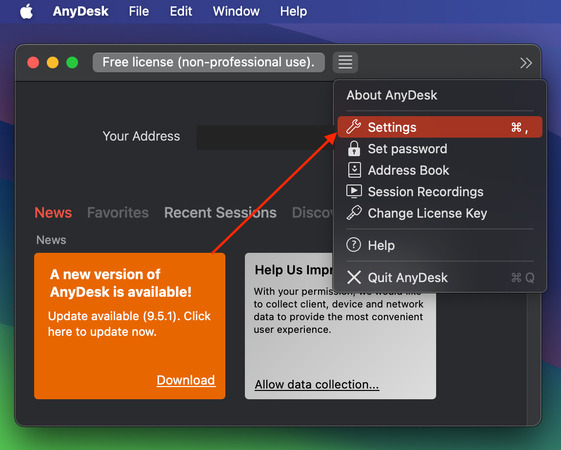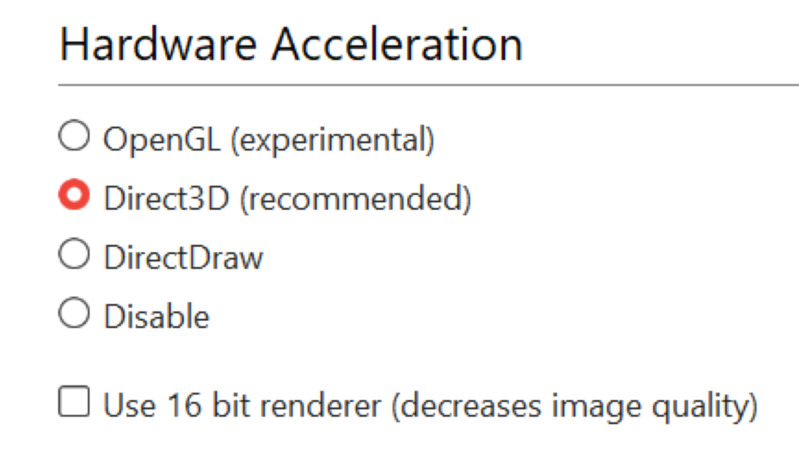How to Fix AnyDesk Waiting for Image Issue
- HelpWire
- →
- Blog
- →
- Anydesk not working
- →
- AnyDesk Waiting for Image
AnyDesk’s “Waiting for Image” error typically points to one of four common issues: a disconnected monitor, unstable internet, firewall restrictions, or misconfigured display settings. The fix is usually straightforward and quick.
Why it happens: The software successfully establishes a connection but fails to retrieve screen data. AnyDesk’s official documentation confirms the main cause: “If you see a Waiting for image message or a black screen… the display drivers on the remote device may be disabled or turned off. This issue is common with modern hardware, as display drivers often deactivate when no monitor is detected. Without active display drivers, AnyDesk cannot retrieve visual data, resulting in a black screen.”
Fixes to try:
- • Disconnect and reconnect the session – Often resolves temporary glitches
- • Auto-adapt the resolution through AnyDesk’s display settings
- • Adjust quality settings to prioritize speed over image quality
- • Check your firewall to ensure AnyDesk isn’t being blocked
- • Use a headless display adapter if you’re accessing a monitor-less device
If these don’t resolve the issue, switching to a more reliable alternative like HelpWire might be worth considering. Here’s what you need to know.
Fixing AnyDesk "Waiting for Image" Error
Before you implement our recommended solution, perform these precheck tips first to cover all bases.
2. Ensure Stable Internet Connectivity: For more consistent and reliable internet, direct connection to a router via Ethernet cable is preferable to Wifi. Perform a speed test using the online speed tests tool to determine your router’s current performance.
3. Check Firewall Settings: To ensure that your firewalls allow AnyDesk, go to “Firewall and Network Protection”, activate the “Change settings” option, and check both the “private” and “public” boxes corresponding to AnyDesk.
Solution 1: Enable Auto-Adapt Resolution
You can evoke the display settings of your computer device to effectively resolve AnyDesk’s “Waiting for Image” issue. Here’s how:
-
Start the session and wait until the “Waiting for image” message appears.
-
Click the lightning icon under “Actions” and select Ctrl+Alt+Del (the ‘Auto-adapt resolution’ option will remain greyed out until this step).
-
Click Cancel.
-
Under “Display Settings” (monitor icon), select Auto-adapt resolution.
-
If this doesn’t resolve the issue, resize your client window and try selecting Auto-adapt resolution again.
Official AnyDesk documentation: According to AnyDesk’s Display Settings guide, the Auto-adapt resolution feature “adjusts remote resolution to fit your window. Remote settings are restored after session ends.” This ensures the remote screen matches your local display capabilities without permanently changing the remote system’s configuration.
Solution 2: Adjust AnyDesk Settings for Optimal Performance
Usually, a little toggle-off in your current settings can fix the issue. AnyDesk often comes with some adjustable performance settings that you can play around with to fix the “Waiting for Image” problem.
-
Open AnyDesk and go to settings. Look for the menu icon, which is the three horizontal lines or dots, and proceed to settings.

-
Adjust the Quality Settings. To do this, navigate to the “Display” → “Quality” tab. You might want to set it to “Best performance” to allow the system to favor a faster connection instead of image quality.

-
Hardware Acceleration / Renderer (2025 update). Another option is to disable Hardware Acceleration, as activating this feature sometimes can harm AnyDesk’s performance. This option is under “Video Settings,” where you can turn it off. Before disabling it entirely, try switching renderers, Direct3D is the recommended default in current versions. If issues persist, switch in this order: Direct3D → DirectDraw → OpenGL. Only then consider disabling Hardware Acceleration.

-
Lower your device’s resolution. Sending a high-resolution image may slow your remote device, so decreasing the resolution may speed things up.
Official AnyDesk documentation: According to AnyDesk’s Display Settings documentation, quality settings control “image quality and speed based on your network and usage needs.” The “Best performance” setting is “optimized for speed and low latency. Useful on slower connections or when fast interaction is needed.”
Solution 3: Use a Headless Display Adapter
This device, which often resembles an HDMI plug, can simulate the presence of a computer monitor, trigger the device to activate its display drivers, and eventually resolve the “AnyDesk stuck on Waiting for Image” issue.
To use a headless display adapter:
- • Plug the adapter into the remote device’s HDMI port.
- • Restart the remote device if necessary.
- • Try reconnecting with AnyDesk. The display should now be transmitted.
Official AnyDesk recommendation: According to AnyDesk’s official “Waiting for Image” troubleshooting guide: “If you don’t want to keep a monitor connected, consider using a headless display adapter. This small device tricks the computer into thinking a monitor is attached, keeping the display drivers active.” AnyDesk confirms this is the recommended solution for monitor-less setups experiencing persistent black screens or “Waiting for Image” errors.
Solution 4: Configure Firewall for AnyDesk Ports
AnyDesk uses specific TCP ports that must be open for the main connection to work properly.
- • Ports needed for Connection (TCP): 80, 443, 6568
AnyDesk can establish a remote connection if at least one of these TCP ports is open.
- • Ports needed for Discovery (Optional UDP): 50001–50003
These UDP ports are used exclusively by AnyDesk’s Discovery feature to find other AnyDesk devices on the local network. They are not required to resolve the “Waiting for Image” issue but may be necessary for the feature to function.
Windows Firewall:
- • Open Windows Defender Firewall → Advanced settings
- • Inbound Rules → New Rule → Port (TCP) → enter 80,443,6568 → Allow
- • Repeat for Outbound Rules
Quick test: Temporarily disable Windows Firewall. If the image loads, the firewall is blocking AnyDesk.
Official AnyDesk documentation: According to AnyDesk’s Error Messages documentation, Windows error codes (win32_10060, win32_11001, win32_10054) indicate firewall misconfigurations. The official documentation states: “These error codes are generated by Windows and usually indicate firewall misconfigurations.”
If you’ve tried all the solutions mentioned but the issue persists, here’s a list of post-check tips to consider:
An outdated AnyDesk version may cause glitches and bugs. So, update AnyDesk on its menu and install the latest version.
2. Reinstall AnyDesk.
Uninstall AnyDesk via the Control Panel, restart your computer, and reinstall the latest version from the official website. This restarts the application’s settings and configuration, which may resolve the “AnyDesk connected, waiting for image” error.
3. Check System Requirements and Compatibility.
Ensure your system meets AnyDesk’s requirements. Update your operating system and close unnecessary applications to improve performance.
Use a Reliable Alternative: HelpWire
If the workarounds above don’t resolve the issue, consider switching to HelpWire, a free remote desktop alternative to AnyDesk. HelpWire offers a range of features that ensure a reliable, stable connection, eliminating issues like AnyDesk’s black screen or “Waiting for Image” errors.
Why HelpWire?
-
Instant Remote Assistance
Quickly connect to clients with secure, auto-generated links for fast and efficient support in real-time.
-
Manage remote devices even when the user is not available on the other side.
-
Effortless File Transfers
Transfer files between local and remote devices easily using simple copy-and-paste during active sessions.
-
Client & Team Management
Monitor session histories, organize client details, and assign roles within the team to streamline support operations.
-
Use the integrated chat feature to enable multiple operators to communicate and coordinate while assisting the same client.